Arriving on the outskirts of Chiapa de Corzo, we spied a masked duo a block away and began to follow them, certain they would lead us to what we had come to witness.
Under the heat of the high noon sun, I knew the pair must be sweltering in their black clothing, heavy serapes and ceremonial headgear. As we made our way down the near-empty street, past casitas painted in pastel shades, others in similar costumes emerged from doorways and side streets and fell into step. Greetings were called and the low buzz of excited chatter and laughter began to hum, punctuated by a percussive rat-a-tat-tat as members of the growing crowd began to shake silver tasseled rattles they held in their gloved hands.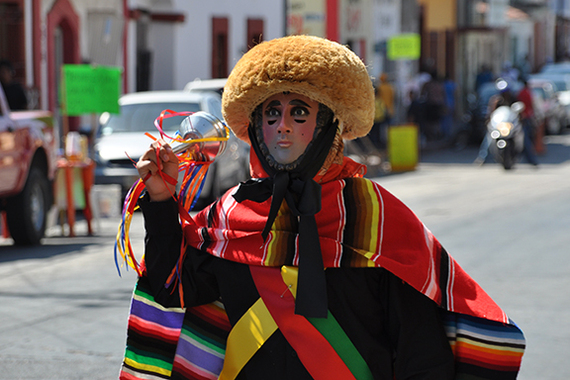
Chiapa de Corzo's Dance of Parachicos is part of the Fiesta Grande de Enero, or Great January Feast, which takes place from January 4 to 23 every year. The Parachicos celebration has been named by UNESCO as an item of intangible cultural heritage and is often described as the best mestizo festival in southeastern Mexico. UNESCO cites the tradition as being held to honor of the local patron saints Our Lord of Esquipulas, Saint Anthony Abbot and Saint Sebastian.
In another explanation, according to legend, in 1711, during Mexico's Spanish Colonial era, Dona Maria de Angula was a rich Spanish woman who traveled to Chiapa de Corzo in search of a cure for a mysterious paralytic illness afflicting her son, which no doctor could cure. When she arrived, she was directed to a curandero, a local healer, who examined the boy, and instructed his mother to bathe him in the waters of a small lake. To amuse the boy, a local group disguised themselves as Spaniards with masks and began to dance, explaining "para el chico," which means "for the boy." The child was cured and the grateful mother expressed her appreciation to the town with a lavish feast, beginning the Fiesta Grande de Enero and Parachico Dance traditions.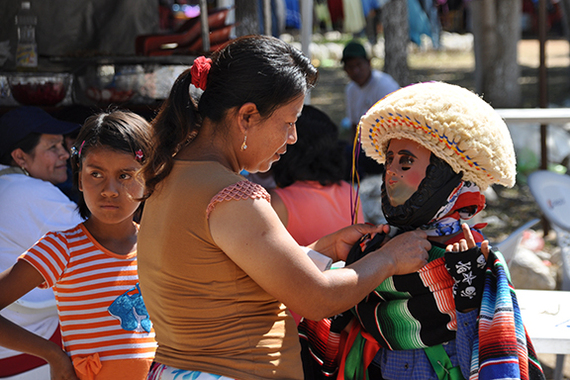
The Parachicos' masks are made with cedar or Guanacaste, an endemic tree, and carved to resemble the European features of a Spaniard, and then lacquered with oil obtained from an insect called aje. Their wigs, adorned with flowers and ribbons, are made with ixtle, a rough fiber derived from agave plants.
We had become engulfed in a current of surreal strangers, all anonymous behind their painted masks. Bobbing along, we eventually spilled into the town's plaza, where clusters of raven-haired women congregated, showing off their full-length, off-the-shoulder dresses emblazoned with vivid floral designs. As they vamped and vogued, teenage couples stole kisses in the shadows of La Pila Fountain, a Moorish structure with eight immense arches constructed in 1562. A father and son were beginning to dress in their Parachico attire, with the older man crossing a red sash around his mid-section and the boy wrapping a bandana around his head before donning the heavy headpiece.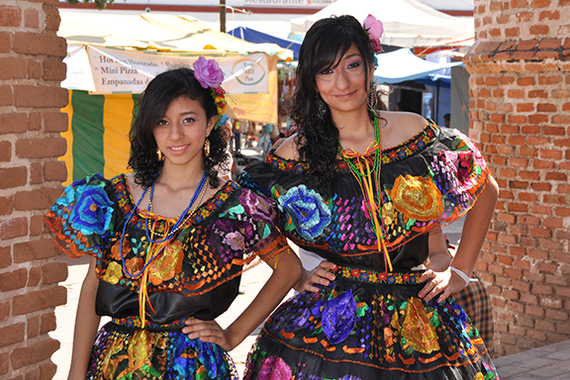
Flowing forward with the widening stream of revelers, we found ourselves in an arcade -- also dressed for the occasion, its timbered white ceilings festooned with brightly-painted bowls hung by ribbons. A grandmother held a chubby-cheeked girl with a lavender ribbon in her hair almost as big in diameter as her head. Old men in pork pie hats greeted each other with a warm embrace. A middle-aged woman cinched the waist of her 20-something daughter's dress, and they squabbled affectionately as the mother tightly tied the bow.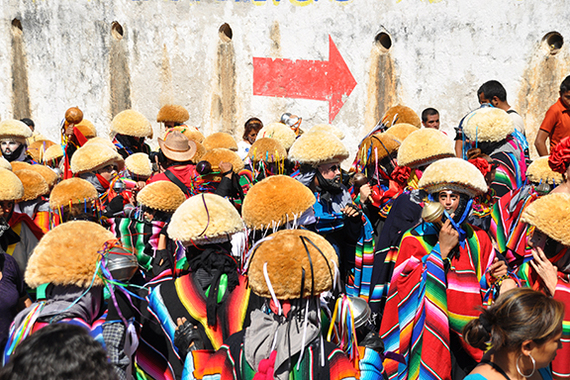
The tide of revelers then moved us through an archway, down stairs and into a park pulsating with wildly dancing Parachicos, cavorting to the pounding beat of a ten-piece mariachi band. In the shadow of the towering Santo Domingo church, serapes swirled, rattles waved high in the air, and dust rose around the writhing bodies. On the stage, a trio of full-figured matrons held their flouncy skirts high and twirled while three marimba players displayed artful choreography on the xylophone-like instrument with Mayan roots. The brass section soared and swayed in time, all in matching pale yellow shirts, their hair slicked up and gleaming.
I was unable to resist the call and tore away from my husband Tom and our guide Jesus and dove into the midst of the crowd, determined to do a shutterbug dance and shoot pictures while shaking my hips to the music. Quickly realizing my motor coordination skills only permitted one of the two activities, I slung my camera over my shoulder and became one with the Paracheco movement, joyously dancing with abandon, and letting loose a loud whoop, knowing I couldn't be heard over the reverberating revelry.
Eventually, sweaty and panting, I found my way back to Tom and Jesus and we made our way to the plaza in front of Santo Domingo. An even bigger crowd milled about, and a sense of anticipation emanated. Jesus tugged at my elbow and pointed in the opposite direction. Up the neighboring hill was a sea of ixtle wigs, bobbing up and down and then advancing toward us. An immense procession of Parachicos made its way to the church, with hundreds of elbows flying, legs kicking, knees jerking, and fingers pointed skyward. As I watched from the sidelines, the individual gyrations blurred into a sensation of one giant mass of jubilant energy. 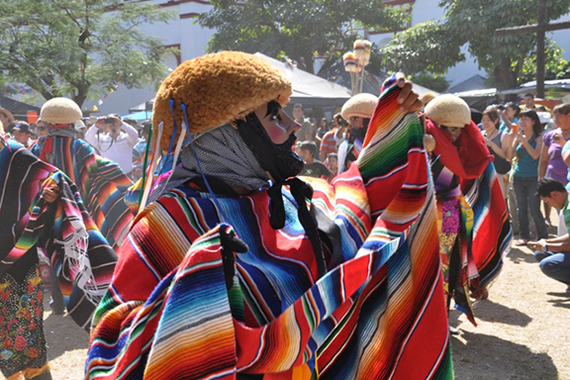
Inspired as an antidote to one young boy's ill health, more than 300 years later the Dance of the Parachicos is alive and well. My own middle-aged muscles had begun to ache but I couldn't have been happier about catching Chiapa de Corzo's infectious spirit of camaraderie and exuberance.
Become a fan of VFTP on Facebook!
Meg Pier's www.ViewfromthePier.com is all about exploring the world's cultural traditions & spiritual practices through travel and photography.